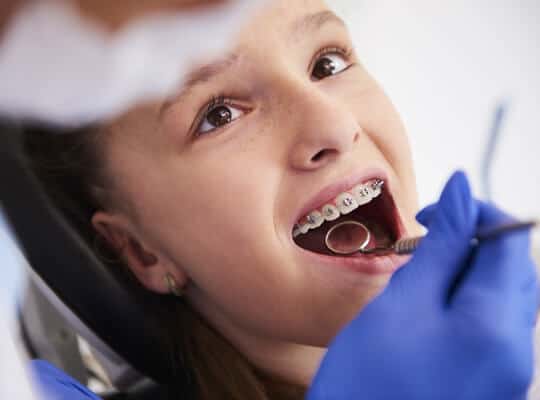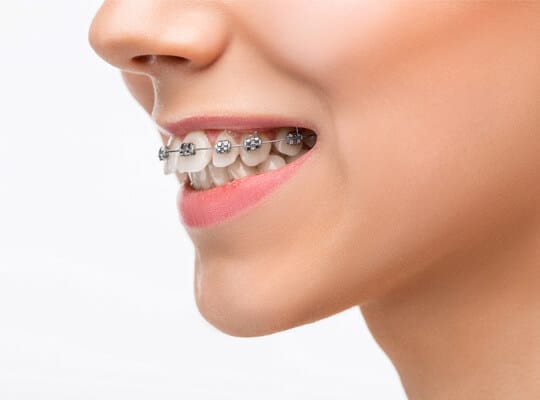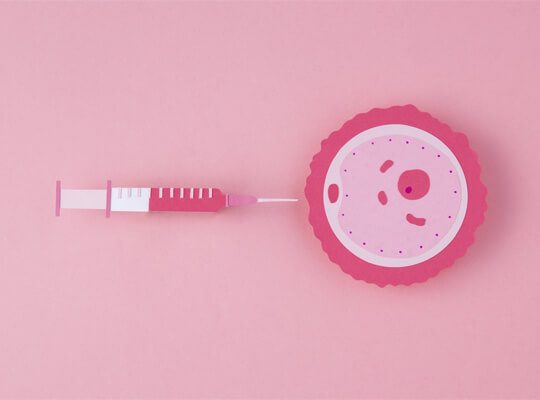Children Braces (Orthodonty)
Table of Contents
We all know the importance of oral health. With dental treatments starting from childhood, you can both protect oral health and put an end to aesthetic concerns. In the Turkish Republic of Northern Cyprus, you can offer your children a healthy and economical solution with both quality materials and experienced dentists.
What are the children braces?
Braces are used to apply constant pressure to the teeth to slowly bring them into a straighter position. They can be recommended for patients with crooked and overly clenched teeth as well as lower and upper bites. Braces improve patients’ facial appearance and make proper oral care easier and more effective. Therefore, they can help patients maintain good dental health in the long run.
Why do kids need braces?
Children may need braces for many different reasons. Among the reasons for orthodontic treatment in children are:
- Overlapping of teeth,
- Crooked teeth,
- Crowding in the mouth
- Closing disorders.
Sometimes, mouth and jaw problems can occur due to early loss of milk teeth in children or the execution of unwanted habits such as thumb sucking.
What happens at the first orthodontist visit?
When you visit the orthodontist for the first time, orthodontic technicians may take X-rays or computer pictures of your mouth and teeth. X-rays and pictures show the orthodontist where the teeth are located and whether you have teeth that have not yet erupted.
The technician or orthodontist can also make a mold of your teeth by pressing a tray of adhesive material on your upper and lower teeth. The mold helps the orthodontist decide how to straighten your teeth.
The orthodontist can provide information about the condition of your teeth and jaw and can suggest you to start treatment.
What are the types of braces?
People who will undergo brace treatment mainly complain about the aesthetic appearance when they use braces. Especially traditional braces are not preferred by many patients. For this reason, more alternatives for braces have been studied and studies have been made to make them aesthetic.
There are 4 types of orthodontic braces. These are:
- Metal braces,
- Lingual braces,
- Porcelain braces,
- Transparent plates.

Ceramic braces
Ceramic braces are braces made of transparent, tooth-colored material. They work in the same way as metal braces, but are more discreet and less visible. Ceramic braces are most popular with patients who feel that Invisalign or lingual braces are not suitable for them, but still want to fix their teeth in a discreet and affordable way.
Compared to metal braces, ceramic braces are less noticeable and offer an affordable alternative to metal braces.
Lingual braces
Lingual braces are a type of invisible braces. Other used invisible orthodontic braces; clear aligners are plastic or ceramic braces. However, “lingual” braces are fixed to the back or lingual side of your teeth, closer to your tongue. Other people can’t see them unless you open your mouth wide as they are stuck behind your teeth. Lingual braces are the braces that cause the least pain compared to other braces.
Invisalign
Transparent plates have grown in popularity over the past decade. Invisalign was popularized by Invisalign in the early 2000s and gradually became the largest record brand.
Transparent aligners and Invisalign:
- Transparent and bright,
- Removable,
- It is one of the most popular types of braces because it allows easier brushing and flossing.
Invisalign works well for patients who wear braces and need only minor corrections, as well as patients with mild to moderate dental problems such as misaligned teeth, large overbite, no jaw alignment problems, and gaps in their anterior teeth.
At what age should children have an orthodontic exam?
In orthodontic problems, early intervention is crucial. Experts recommend that children have their first checkup with an orthodontist until the age of 7 at the latest, as soon as an orthodontic problem is detected and even if no problems appear.
How long do you need to wear braces?
One of the frequently asked questions among people who use braces is how long they will be used. Duration needed to wear braces depends on the problems to be fixed by the orthodontist. In addition to being determined by dental hygiene, necessary treatment and the type of braces you choose, the average usage time of braces is approximately two years. After two years of treatment, it may be recommended to wear a specially molded retainer for children. The retainers prevent the teeth from returning to their original positions.
Caring for braces
There are many ways to take care of your braces and teeth while undergoing orthodontic treatment.
Brushing your teeth with braces,
Avoiding certain foods
While wearing braces, there are very few prohibited foods, but chewy, sticky, crunchy or hard foods are among the foods you should pay attention to. Along with these, you should also avoid sugary foods and drinks as they can cause staining and rot around your braces.
If you have a habit of biting nails, you should leave this habit very quickly.

Are there any side effects of braces?
During the period to get used to braces, you can experience:
- Mild discomfort
- Irritation in the lips and mouth
- Jaw pain
- Difficulty in eating.
Do braces hurt?
It is normal to experience a little pain when braces are applied to the teeth. Since you will need to get used to chewing, your eating time may take longer on the first day you wear braces. For the first few days, it is recommended by experts to eat softer foods such as soup, yogurt, pasta and cheese.
Is it possible to be allergic to braces?
Braces are made from a metal mixture of stainless steel, nickel, and many other metals. An allergic reaction to a component from which braces are made is very rare. This is rare, but an allergic reaction can be observed.
For More Information
Please do not hesitate to contact us for more information on the subject.



